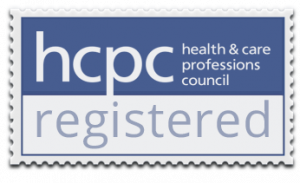
Photo by Cathryn Lavery on Unsplash
In today’s era of technology, increased transparency and greater mobility, employee engagement and productivity have become some of the biggest challenges for business leader cross the country. The statistics are clear. According to the Gallup’s State of the American Workforce report, more than 70% of employees today don’t feel engaged in their workplace.
That number is alarming to say the least, however, before we go any further, we must establish a few things first; for instance, engagement doesn’t necessarily mean employee satisfaction. Your employees could be completely satisfied with their personal lives, but that doesn’t mean that they are productive or engaged in their work.
Establishing engagement
So how do we define employee engagement anyway? According to the best-selling author, Kevin Kruse, engagement can be defined as a sort of an “emotional commitment” workers have to your organization and your goals. This basically means that engaged employees are the ones that are not only interested in their next pay, but the ones who work on behalf of organization’s goals. The biggest question here is – how can you keep your workforce completely engaged and productive at all times? There are a couple of ways you can do that, for example…
Use technology responsibly
Technology is a great thing, we can all agree on that. However, you don’t want your workers to be consumed by it when they are supposed to be working on their latest project. Sadly, a good chunk of today’s employees waste more time than ever. According to a Salary.com survey from a few years back, around 70% of people said they waste a certain amount of time at the office, every single day. Most of the time people tend to spend on their smartphones, checking out their social media profiles. This means that you may have to work on the policies you put in place and restrict their mobile usage.
Using gaming techniques for motivation!
 To increase productivity, Adam believes it’s a good idea to motivate your workforce. In most cases, unmotivated workers get easily distracted, and unproductive especially when they are dealing with monotonous daily routines. Moreover, people who lack motivation probably aren’t going to have enough enthusiasm to finish any challenging tasks. That might be why we need to use some gamification techniques to motivate employees. The process involves the use of points, score boards, rewards, and numerous other gaming elements to make mundane tasks more engaging. Platforms like GameEffective can easily be integrated through enterprise apps to add another dimension to your operations.
To increase productivity, Adam believes it’s a good idea to motivate your workforce. In most cases, unmotivated workers get easily distracted, and unproductive especially when they are dealing with monotonous daily routines. Moreover, people who lack motivation probably aren’t going to have enough enthusiasm to finish any challenging tasks. That might be why we need to use some gamification techniques to motivate employees. The process involves the use of points, score boards, rewards, and numerous other gaming elements to make mundane tasks more engaging. Platforms like GameEffective can easily be integrated through enterprise apps to add another dimension to your operations.
Make it part of your strategy
Employee engagement must be a business strategy that focuses on finding engaged employees, then keeping the employee engaged throughout the whole employment relationship. Employee engagement must focus on business results. Employees are most engaged when they are accountable, and can see and measure the outcomes of their performance. https://www.floship.com/employee-engagement-strategies-2018/
Provide constant feedback
All employees tend to be more engaged if they know what is expected from them. Once you start clearly stating company goals, everyone will be able to see your vision more clearly. You should particularly work on short-term goals, because they can effectively motivate your employees to properly manage their speed in finishing tasks to meet deadlines. In addition, it is also important to provide feedback on a regular basis, and show people that they are constantly being supervised. Young people (especially millennials) want feedback, according to research conducted by the HR consultant, Haydn Shaw, less than 10% of millennials even think weekly feedback is enough. Most of them, in fact, like feedback daily.
Eliminate motivation destroyers
If most of your employees work from an office, it helps to identify certain ‘motivation destroyers’ in the workplace, and do everything you can to ease these. A good owner will always find a way to carefully observe the office in search of problematic areas that affect the motivation of their employees. Typical motivation disruptors include negative workers, abrasive personalities, and lack of opportunities for professional development or weak management styles, and a lack of appreciation for hard-working employees. Only when we start addressing each one of these issues can we get rid of these motivation-killers.
Finally – Think about improving your communication
Perhaps the most important aspect of business operations is communication. If a business doesn’t have an effective communication system in place, it can be extremely difficult to achieve a company’s goals, and maybe even function properly as serious business organizations. Good communication really means that every person in the organization is aware of the hierarchy within the company. Employees then know who to reach out to when they have a problem.
This doesn’t mean that we shouldn’t invest in proper communication tools; modern apps and platforms offer a lot of benefits. Social networking apps such as Yammer enable employees to contribute to institutional knowledge, and help younger employees adapt more quickly. Also, cloud-based apps such as Office365 for Business definitely helps to develop a culture of sharing, helping and increasing productivity across the organization.
 Born and raised in Dallas, Adam Ferraresi is a successful web development expert who has been writing and publishing articles wefollowtech.com for the last couple of years. When he is not hard at work (which is most of the time), you can find him on the basketball court or at the nearest Chinese restaurant, eating his favourite Chow Mein and reading fortune cookies.
Born and raised in Dallas, Adam Ferraresi is a successful web development expert who has been writing and publishing articles wefollowtech.com for the last couple of years. When he is not hard at work (which is most of the time), you can find him on the basketball court or at the nearest Chinese restaurant, eating his favourite Chow Mein and reading fortune cookies.


